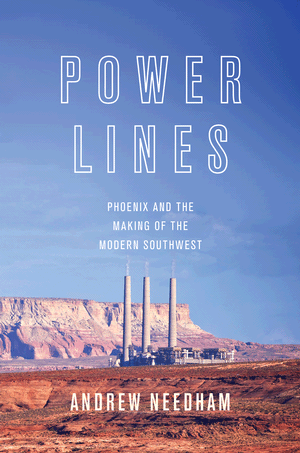Power Lines: Phoenix and the Making of the Modern Southwest
Andrew Needham
Princeton University Press

In the past 70 years, Phoenix has grown from an agricultural burg of 65,000 into a metropolis of 4.3 million. To achieve 66-fold growth in the desert takes vast amounts of water and electricity. Historian Andrew Needham tells a tale of urban transformation—and ultimately of environmental despoliation and plunder. Phoenix needed power to keep its industry (and air conditioners) running, and to pump water from the Colorado River. Sierra Club activism blocked plans for hydroelectric power and left Phoenix with a fateful alternative: strip mines and coal-fired plants on the nearby Navajo Nation. Private power companies outmaneuvered bureaucrats, courted tribal leaders, and parried with environmental and Navajo activists to ensure cheap electricity and private profits in the metropolis. Navajo lands, now torn up for coal, remain poor, and few Phoenix suburbanites know where their power comes from, or how momentous infrastructure decisions have shaped their city and the society and environment around it. —Nathan F. Sayre
For more on the science of society, and to support our work, sign up for our free email newsletters and subscribe to our bimonthly magazine. Digital editions are available in the App Store (iPad) and on Google Play (Android) and Zinio (Android, iPad, PC/MAC, iPhone, and Win8).




